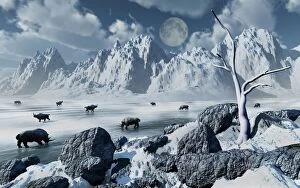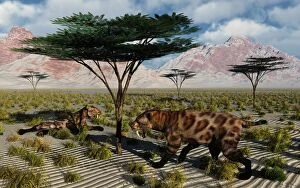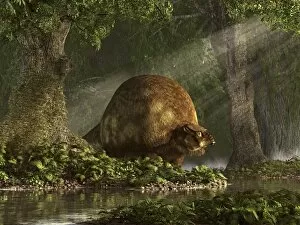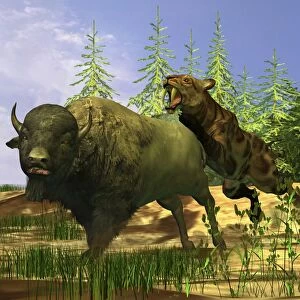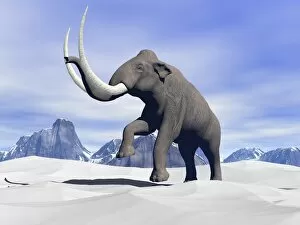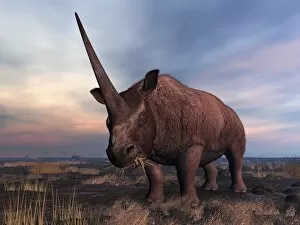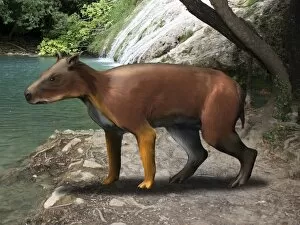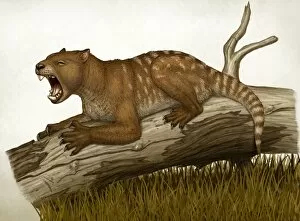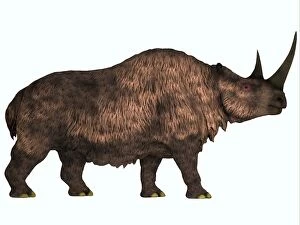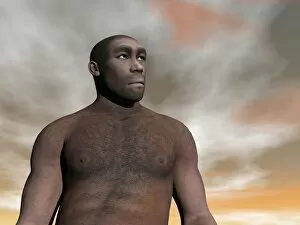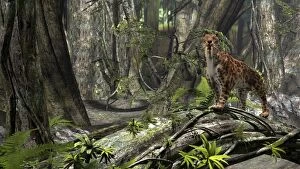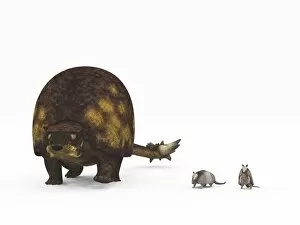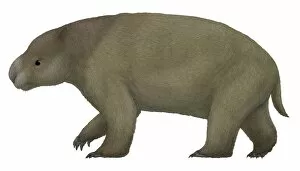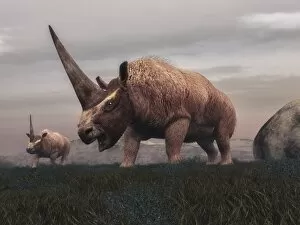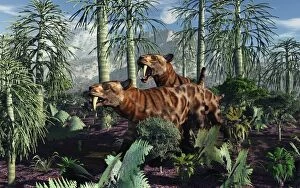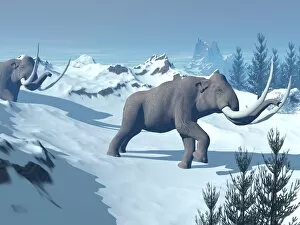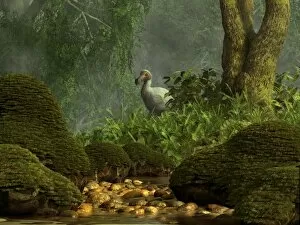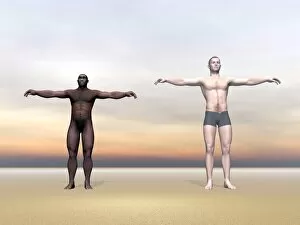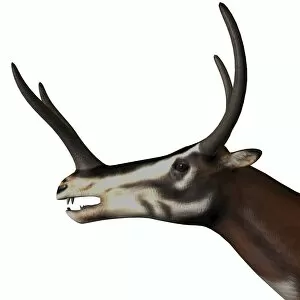Cenozoic Era Collection (#2)
The Cenozoic Era, also known as the Age of Mammals, was a time of incredible diversity and fascinating creatures
For sale as Licensed Images
Choose your image, Select your licence and Download the media
The Cenozoic Era, also known as the Age of Mammals, was a time of incredible diversity and fascinating creatures. In this captivating wood engraving from 1878, we catch a glimpse into the wonders of this era. A group of Dodo birds gracefully navigate their way across a natural bridge over a babbling stream. These flightless birds, now extinct, were once abundant during the Cenozoic period. Their playful nature is evident as they engage in a game of hide-and-seek amidst lush foliage. On a mountainside stands an imposing figure - the Smilodon. With its dagger-like front canine teeth and powerful build, it is no wonder that these saber-toothed cats were feared predators during this era. Here we witness them attacking a Glossotherium with ferocity and precision. In another scene, we are treated to an up-close view of one such Saber-Tooth Cat in all its glory. Its large size and distinctive features make it an awe-inspiring sight to behold. The golden fall fields surrounding it only enhance its majestic presence. Moving on to avian life during this era, we encounter Andalgalornis steulleti - beautifully reconstructed here based on fossil evidence. This bird's unique head structure hints at its specialized feeding habits and adaptation to its environment. As our journey continues through time, we come across yet another pair of Dodo birds waddling along a forest path. Their comical appearance belies their resilience in surviving alongside other remarkable species that roamed the Earth during the Cenozoic Era. Among these extraordinary creatures was Basilosaurus - an ancient marine mammal that thrived during the Late Eocene epoch. Its sleek body allowed for efficient swimming through prehistoric oceans while showcasing nature's ability to adapt and evolve over millions of years. To truly grasp the scale and grandeur of these animals' existence, we are presented with a size chart comparing various big felines.





